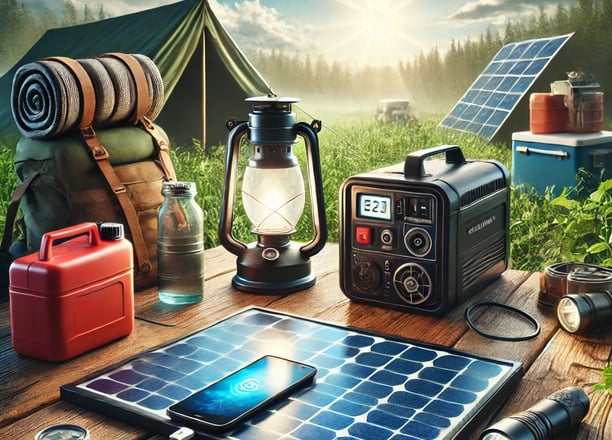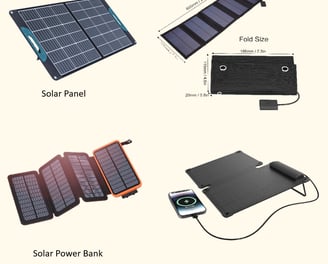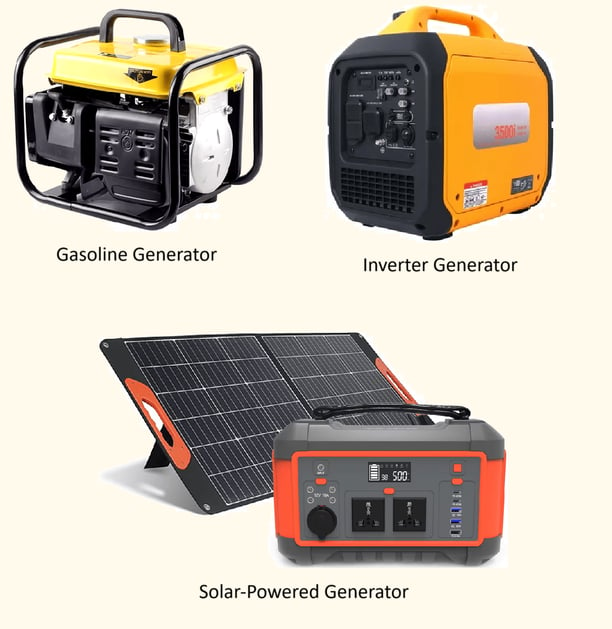Lighting
Use flashlights with extra batteries or solar-powered options. Avoid candles due to fire risks. Proper lighting is crucial for safety, visibility, and morale in emergencies. Power outages or damaged infrastructure can leave you in complete darkness, making it essential to plan for reliable lighting options.
PREPARE ESSENTIAL SUPPLIES
12/28/20242 min read
Lighting
Use flashlights with extra batteries or solar-powered options. Avoid candles due to fire risks. Proper lighting is crucial for safety, visibility, and morale in emergencies.
Power outages or damaged infrastructure can leave you in complete darkness, making it essential to plan for reliable lighting options.


1. Importance of Lighting
A. Safety
Prevents accidents and injuries in dark environments.
Helps you identify potential hazards or threats.
B. Functionality
Enables essential tasks like cooking, navigating, or first aid during low visibility.
Facilitates communication and signalling for help.
C. Morale
Reduces fear and anxiety by creating a sense of normalcy.
2. Types of Lighting
A. Battery-Powered Lights
Flashlights
Portable and versatile for personal use.
Use LED flashlights for energy efficiency and brightness.
Headlamps
Hands-free option for tasks requiring mobility.
Adjustable straps and beams for versatility.
Lanterns
Illuminate larger spaces like rooms or campsites.
Rechargeable or battery-operated versions are ideal.
B. Solar-Powered Lights
Eco-friendly and sustainable in long-term scenarios.
Rechargeable during the day for use at night.
Examples: Solar lanterns, garden lights, or collapsible solar lights.
C. Rechargeable Lights
USB-powered or crank-operated options eliminate reliance on disposable batteries.
Some models come with power banks for charging small devices.
D. Candles and Oil Lamps
Reliable backup for emergencies when modern lighting fails.
Keep a supply of long-burning candles or oil and wicks.
Use cautiously to prevent fire hazards.
E. Glow Sticks
Inexpensive and lightweight.
Useful for signalling or providing light without power.
3. Planning Lighting Solutions
A. Multipurpose Options
Opt for lighting devices with multiple settings (e.g., high, low, strobe).
Choose water-resistant or shockproof models for durability.
B. Portability
Compact and lightweight lights are easier to carry during evacuation.
C. Power Sources
Stockpile extra batteries in multiple sizes (AA, AAA, etc.).
Invest in rechargeable options and solar charging kits.
4. Placement of Lights
Fixed Lights: Set up lanterns or solar lights to illuminate central living or working areas.
Pathway Lighting: Use glow sticks or small solar lights to mark routes or hazards.
Personal Lighting: Assign flashlights or headlamps to each individual.
5. Advanced Lighting Tips
A. Tactical Use
Avoid excessive lighting that could draw attention in dangerous areas.
Use red or dimmed lights at night to preserve night vision and stay inconspicuous.
B. Emergency Signaling
Use strobe lights, reflective surfaces, or mirrors to signal rescuers.
Carry a whistle with your light for audio signalling.
C. Lighting for Special Needs
Include bright, durable lights for older adults or visually impaired members.
Provide child-friendly lights, like small lanterns or glow sticks, for comfort.
6. Common Mistakes to Avoid
Forgetting Extra Batteries: Ensure you have enough replacements for extended use.
Relying Solely on One Type: Diversify your lighting sources for redundancy.
Neglecting Maintenance: Regularly check bulbs, batteries, and functionality.
7. Long-Term Lighting Solutions
A. Solar Power Systems
Set up solar panels to charge multiple devices during prolonged outages.
B. Fuel-Based Lighting
Stock fuel for oil lamps or kerosene lanterns for a consistent light supply.
C. Fire as a Backup
Build small, controlled fires for outdoor lighting in safe areas.
8. Example Lighting Kit
Primary Lights: 2 flashlights (1 per person), 2 headlamps.
Backups: Glow sticks, candles, matches/lighters, and oil lamps.
Power Supplies: Spare batteries, solar chargers, and a hand-crank generator.
Reliable lighting is a cornerstone of survival planning. A combination of modern and traditional lighting solutions ensures you remain prepared for any situation. With proper planning and resource management, you can maintain visibility and safety even in the darkest circumstances.




